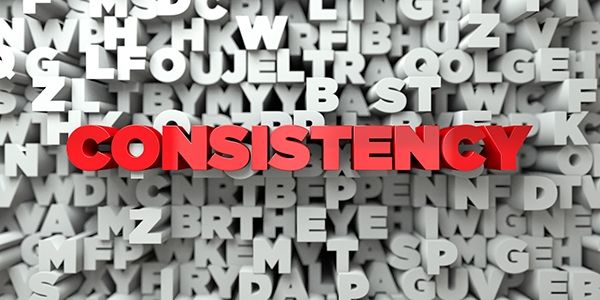Top 6 Critical BA Skills for the Future (and today!)
As we cruise through the last days of 2016, it’s important to peek in the rearview mirror. Reflecting on the past reveals patterns and trends in our travels that we can use to predict future destinations.
When I look in my 2016 review mirror, I gather insights from deep conversations with industry leaders, real world problem solving with clients, and sharing ideas with students. These insights drive my thinking about the future of business analysis.
Can you guess where we are going? Do you know what skills you need to pick up along the way?
Regardless of title (BA or not) and approach (traditional, agile, or hybrid), everyone in the business of discovering, defining and delivering value can prepare for the future by developing the following skills:
1) Data Insights
Modeling and data relationships are moving to the back seat while data insights take the wheel. This means that we will be asked dig deeper into our data to discover insights that our stakeholders are not aware of and would be difficult, if not impossible, to elicit.
Data insights start with a comprehensive understanding of our customers and our business. Using our customer and business understanding we can look at data differently and analyze the customer patterns and behaviors. These patterns provide insights to where end users experience value in the product/solution itself and it’s features.
2) Requirements Anthropology
Data insights are critical, but data does not always give us the full picture. Requirements anthropology asks us to go beyond the data and the information we elicit from stakeholders. We need to develop an empathetic mindset that allows us to enter the world of our users and identify their behavior patterns. When we approach our requirements like anthropologists, we take a deeper look at the role the product or solution plays in the end user’s life, work and habits. It’s about observing behaviors and understanding where value is derived for a variety of user types.
An anthropologist’s work would not be complete with out looking at the entire ecosystem of how the user behaviors and patterns impact the preceding or resulting business process. Can business model or process changes improve the life of the user and ultimately the value the user receives? This is what requirements anthropology is about!
3) Visualization
The ability to create effective visuals has always been important, but the purpose of visual communication is changing. In the past, we used data in a visual form to prove a point or simplify a decision. Modern visuals are about concepts, exploring, and learning rather than the typical inform & declare process of the past.
We have a giant amount of complex information at our fingertips, so we need to think harder about the purpose of each visual. Effective visualization skills (with the help of many new visualization tools) help our teams make sense of the vast and complex information, and help us along the learning journey to gather insights about where value lies. The complexity of today is making this learning journey an imperative! Insights regarding value are no longer obvious, they are the “needle in the haystack.”
4) Forensic Thinking
Forensic thinking helps teams get to the root of complex problems by applying a scientific approach. Forensic thinkers use a logical process to confirm the problem’s cause by direct observation, examination and/or objective measurement. This approach helps BAs gather meaningful, accurate requirements rooted in facts rather than stakeholder perceptions or assumptions.
An important focal point for our forensic thinking is the customer experience. Modern teams use forensic thinking to explore customer patterns. Forensic thinking also aligns well with solutions that prevent and investigate fraud and digital/cyber crimes.
So, what does forensic thinking look like? It involves going far beyond what stakeholders say or think they want or need and truly looking at various resources, tests, data, and connections that build upon one another to get to the learnings that ultimately provide insights.
5) Data Security
In the past, data security skills fell on the shoulders of our techie teammates. Now BAs need data security skills too! We need to understand which data assets are most valuable to the organization, and help the organization weigh decisions about protecting this data. If teams protect data too fiercely, they may compromise business performance. Think about the customer who abandons a purchase because the app wants too much data or takes too long to authenticate. Or think about the internal user who abandons core systems to use an “unauthorized” program to meet customer needs and business goals faster.
As BAs we need to understand these dynamics and be prepared to discuss the impact data decisions have on solution requirements, solution design, user/customer experience, and risk to the organization. We need to understand the value of data and the possible risk/reward trade-offs.
6) UX – User Experience
UX is changing and new UX skills are coming into play in this digital era. The huge migration to mobile and tablet devices over web/PC screens will grow as we rely on our devices more and more. This means more UX-related projects and product development for BAs. Responsiveness, modular design and service design are key. BAs with UX skills understand how the UX design features play with all technical layers.
Other key areas of UX include customer experience mapping and rapid UX work. This means understanding the business model and processes very well in order to design a UX that supports the strategy, business model, and flow of the most critical pieces of value.
Formal wireframes are fading out in favor of quick hand-drawn lo-fidelity sketches that go straight to the build process for quick feedback from users. It means more collaborative design sessions instead of reviewing wireframes. BAs who want to keep up with UX will also need to acquire persuasive design and user-centered design skills.
Are you seeing increasing demand for these six skills in your organization? They shine a bright light on a giant shift in our thinking about business analysis. In many organizations, BAs focused largely on analyzing internal systems and processes. Based on my discussions with many of you this year, BAs are increasingly looking outside. They uncover value by analyzing the end user’s environment, thinking, patterns and behaviors.
Don’t get left behind! Develop skills that fuel the future.
Please leave your comments below.




